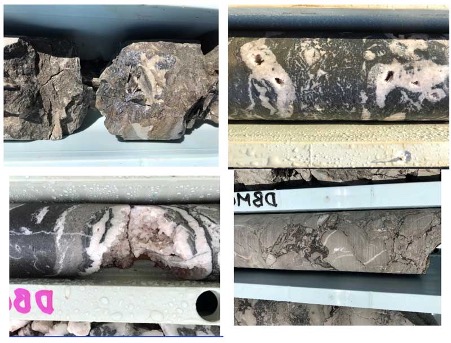High-grade silver-lead-zinc a potential gamechanger for soon-to-be silver producer Manuka

Pic: Getty
Results from Manuka’s Wonawinta Deeps proof of concept drilling could be transformational for the emerging silver producer, with not only extremely high-grade silver but also high-grade zinc and lead found beneath the current resource.
While the Wonawinta mine in NSW’s Cobar Basin already has a large silver oxide resource, recent drilling by Manuka Resources (ASX:MKR) has shown clear evidence of high-grade sulphide mineralisation and the potential for the mine to be a Mississippi Valley-type (MVT) deposit.
The significance of this is that MVT deposits contain a large amount of the world’s economic zinc and lead, making them extremely attractive targets.
Canadian explorer Osisko Metals’ Pine Point mine in the Northwest Territories is an example of a large MVT deposit, with the operation expected to produce 327 million pounds of zinc and 143 million pounds of lead each year, potentially making it a top 10 global producer.
An MVT deposit can be a gamechanger for a company.
Manuka has already established itself as a successful gold producer and is on the cusp of becoming Australia’s largest silver producer.
The company is the first to probe the sulphide mineralisation at depth and the discovery of significant high-grade lead and zinc at Wonawinta only enhances its value.
The 18-hole, 5000m drilling program unearthed lead, zinc and silver mineralisation over the 3km of strike tested. That is just 20 per cent of the total 15km strike held by Manuka on the western flank of the Cobar Basin.
The median reported grade of silver in global MVT deposits is 32.5 grams per tonne (g/t).
But results from Manuka’s proof of concept drilling returned much higher grades like 20m at 1.98 per cent lead+zinc and 43g/t silver (or 110g/t silver equivalent) from 94m, including 4m at 6.34 per cent lead+zinc and 63g/t (or 372g/t silver equivalent) from 101m.
Single-meter results included extremely high grades of 1m at 12.18 per cent lead+zinc and 343g/t silver (or 732g/t silver equivalent) from 104m, and 1m at 11.93 per cent lead+zinc and 314g/t silver (or 701g/t silver equivalent) from 101m.
The program targeted lead-zinc-silver sulphide mineralisation at depths from 80-250m below surface.

“The geology at depth beneath Wonawinta’s existing large silver oxide resource has, in our view, always had the potential to add material value to Manuka,” executive chairman Dennis Karp said.
“Cobar is well known for its long-life mines which continue to grow well beyond initial expectations.
“Historically there has been little drilling below 100m depth at Wonawinta. Manuka is the first company to target Wonawinta’s sulphide mineralisation and whilst it is early days, the results from our initial proof of concept drilling confirms the potential for the carbonate-hosted sulphides to yield an MVT style base metal and silver asset.”
Karp said this could add significantly to the revenue stream flowing from the silver production at Wonawinta starting later this year.
Importantly, the success of the initial Wonawinta Deeps program supports Manuka’s plan to add a production facility producing base metals concentrates from a flotation circuit at Wonawinta.
The company now plans to aggressively pursue this new discovery with a targeted geophysics survey to be undertaken along the entire Wonawinta Trend in the September quarter, followed by further drilling in the December quarter.
This article was developed in collaboration with Manuka Resources, a Stockhead advertiser at the time of publishing.
This article does not constitute financial product advice. You should consider obtaining independent advice before making any financial decisions.
Related Topics
UNLOCK INSIGHTS
Discover the untold stories of emerging ASX stocks.
Daily news and expert analysis, it's free to subscribe.
By proceeding, you confirm you understand that we handle personal information in accordance with our Privacy Policy.








